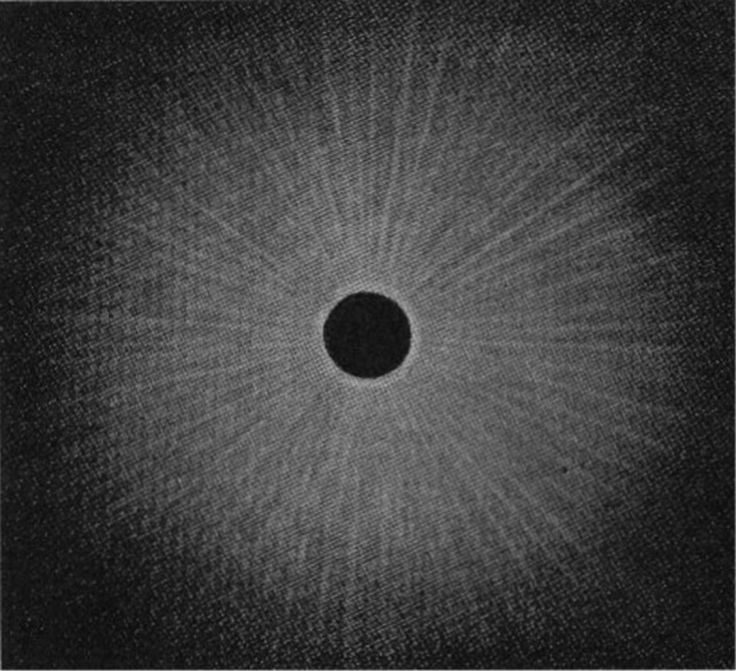Chaco Canyon Rock Carving May Depict Year 1097 Total Solar Eclipse

The mysterious Chaco Canyon civilization may have captured a total solar eclipse from 1,000 years ago by carving an image of the blocked-out sun and coronal mass ejections into rock.
A carving in their territory, in what is now New Mexico, shows a circle with looping arms coming out of it. The image, known as a petroglyph, might be a representation of the solar eclipse on July 11, 1097, according to the University of Colorado Boulder. Research suggests that the sun was going through a period of high solar activity at that time, so the protrusions depict the sun ejecting material into space.

The sun can be tracked on an 11-year magnetic cycle, during which it goes through periods of high activity and low activity. During periods of high activity, it can erupt plasma in what is known as a coronal mass ejection, which appears as a loop coming out of the sun, as many as three times a day.
“It turns out the sun was in a period of very high solar activity at that time, consistent with an active corona and [coronal mass ejections],” CU’s Kim Malville said in the statement about the time of the 1097 solar eclipse.
Read: The Chaco Canyon Civilization Was Obsessed with Feet
He helped discover the petroglyph in 1992, on a free-standing rock that is now called Piedra del Sol, and better understand it.
“If one looks at a drawing by a German astronomer of the 1860 total solar eclipse during high solar activity, rays and loops similar to those depicted in the Chaco petroglyph are visible,” Malville said.
There are other astronomical images at Piedra del Sol, including of a sunrise and a summer solstice, as well as ones that might show a supernova and a comet. But there are no other obvious eclipse depictions.
“This possible eclipse petroglyph on Piedra del Sol is the only one we know of in Chaco Canyon,” Malville said. “I think it is quite possible that the Chacoan people may have congregated around Piedra del Sol at certain times of the year and were watching the sun move away from the summer solstice when the eclipse occurred.”
A 2014 paper in the Journal of Mediterranean Archaeology and Archaeometry, authored by Malville and José Vaquero at the University of Extremadura in Spain, says the total solar eclipse in July 1097 was “the only visible total eclipse during the period of maximum great house construction (1020-1130 CE) in Chaco Canyon.”
According to the study, the path of totality for the solar eclipse would have gone right through modern-day New Mexico and passed across the area of Chaco Canyon, in the northwestern part of the state.
And it came at a good time for everyone to see it: mid-afternoon, while the sun was high in the sky. The total eclipse would have lasted for four minutes.
Read: Ancient Art Shows Comet Crash That Caused Climate Change
Archaeologists have been working for years to understand this civilization, which left behind complex building structures and roads, artifacts, skeletons and rock carvings. The infrastructure, although in ruins, is extensive enough to help get the location recognized as a World Heritage site. According to UNESCO, “they are remarkable for their monumental public and ceremonial buildings and distinctive multi-story ‘great houses.’” They also had “carefully engineered and constructed roads, many of which can still be traced.”
Although the petroglyph of the solar eclipse is interesting in light of the upcoming total solar eclipse that is passing through the United States on Aug. 21, the Chaco Canyon people are also noteworthy for their depictions of extra toes and apparent reverence for them. Artwork from the group shows important people with six digits on their feet, among other depictions of human feet and footprints with added toes. Experts have also found sandals that had space to accommodate extra toes.
The Chaco Canyon people were just one historical society that depicted astronomical events — communities across the world have been doing that for millennia. Earlier this year, scientists pinpointed another example: stone carvings in Turkey from 13,000 years ago that appear to show a comet striking down on Earth around the same time the planet entered a 1,000-year cooling period. The comet crash might have been connected to the climate change that followed.
There is another famous image of a total solar eclipse taken by hand rather than with a camera: the sketch from Spanish astronomer José Joaquin de Ferrer, who was in New York in 1806 when the moon passed in front of the sun. His drawing shows the sun’s atmosphere, its corona. “Before astronomical photography, observers depended on sketches of eclipses to study the sun's corona,” NASA says.

© Copyright IBTimes 2024. All rights reserved.











